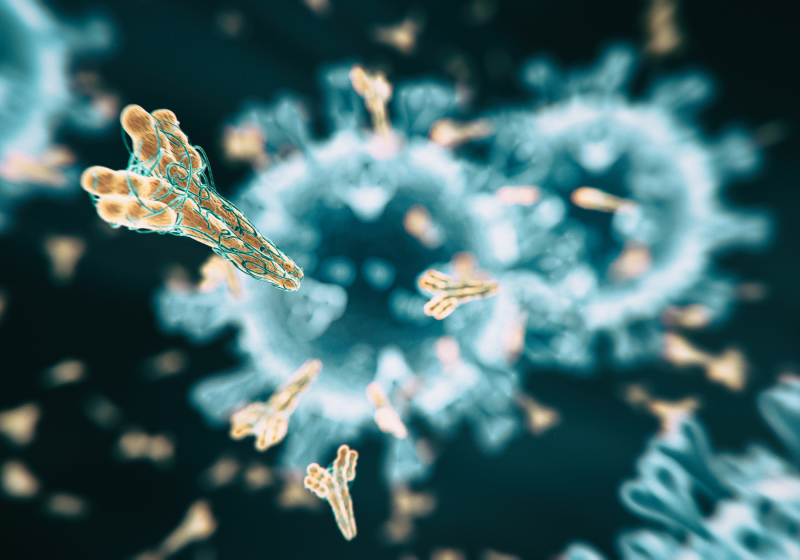In a new study, an international team led by the University of Bonn identified and further developed the novel single-domain antibodies (sdAbs) against SARS-CoV-2. The researchers also combined these single-domain antibodies into new molecules and attacked different sites of the virus at the same time. This method may prevent the pathogen from evading the attack of the active agents through mutation.
Figure from Science, 2021, doi:10.1126/science.abe6230
Scale production in yeast or bacterial expression systems
“We focus on single-domain antibodies,” explains Dr. Florian Schmidt of the University of Bonn. Single-domain antibodies are antibody fragments, which are very simple and can be produced by bacteria or yeast at a low cost.”
However, the number of different antibodies produced by the immune system is almost endless, and they can recognize different target structures. For example, only a few antibodies can defeat SARS-CoV-2. “We first injected the surface protein of this coronavirus into an alpaca and a llama,” Schmidt explained. “Their immune systems produce antibodies that are primarily specific to the virus. In addition to complex normal antibodies, alpacas and llamas also produce a simpler antibody variant that can be used as the basis for single-domain antibodies.”
A few weeks later, the researchers took blood samples from the animals and extracted genetic information about the antibodies. This library also contains millions of different construction diagrams. In a complex process, they extracted antibodies that recognize SARS-CoV-2 spike proteins. “We got dozens of single-domain antibodies in total, and then we analyzed them further,” explained Dr. Paul-Albert König, Faculty of Medicine, University of Bonn.
Four effective molecules found from millions of antibodies
In cell cultures, four single-domain antibodies have been shown to be effective against this pathogen. “Using X-ray structure and electron microscopic analysis, we can further demonstrate how these antibodies interact with spike proteins,” König explained. “SARS-CoV-2 spike protein is essential for cell infection, and the virus attaches to the attacked cell through the spike protein. Then, the structure of spike protein changes and mediates the fusion of virus envelope and cell membrane. Single-domain antibodies also seem to trigger this structural change before SARS-CoV-2 encounters its target cells. This is an unexpected and novel mode of action. This change is likely to be irreversible. As a result, the virus can no longer bind to host cells and infect them.”
Researchers also took advantage of another advantage of single-domain antibodies over normal antibodies. These antibodies have a simple structure and can be directly combined to form new molecules with hundreds of times higher effectiveness. “We have fused two single-domain antibodies targeting different sites of spike proteins,” explains König. “This fusion is very effective in cell experiments. In addition, we have shown that this multivalent single-domain antibody significantly reduces the probability of SARS-CoV-2 becoming resistant to active agents by mutational escape.” They firmly believe that these molecules may be developed into a novel and promising treatment.

